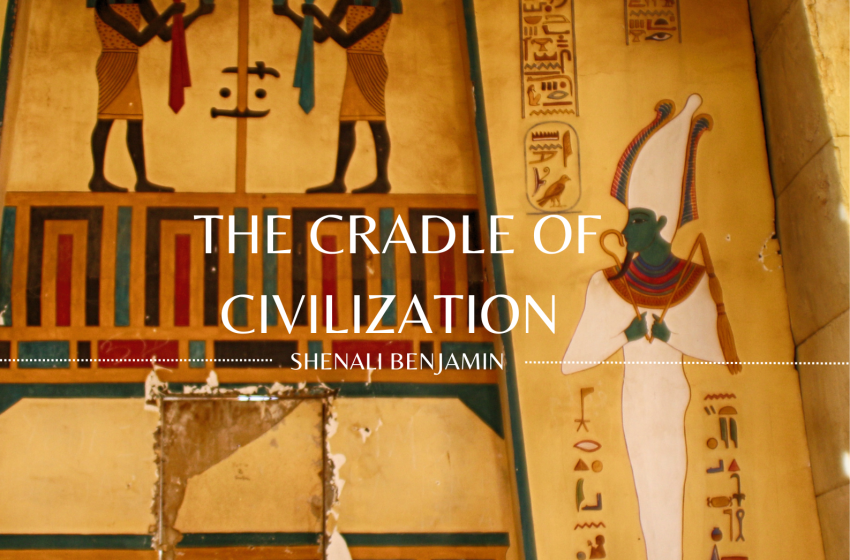The Cradle of Civilization
- History
Shenali Nathania Benjamin
- February 9, 2023
- 214
- 5 minutes read

Human civilization is merely a wrinkle in time. It is the stage of human social development and organization that is considered most advanced. It can be also defined as a complex culture comprising five characteristics. These fundamental characteristics involve the advancement of cities, specialized workers, complex institutions, record keeping and advanced technology.
The reason as to why civilization is often a fascinating topic amongst people is because it depicts where humanity progressed or regressed. When paying close attention to civilizations throughout a certain period of time, it is clearer to see the precise moments where ideas originated. The transition of human species from hunters and gatherers to Neolithic people indicates people taking control along with the development of culture. Farms sprang up and sedentary villages began to take up the farming lifestyle. The belief system of the way humans developed as a whole is an equivalent to one giant melting pot where ideas, attitudes, social awareness and values are all boiled down into one big mass. Some ideas may not belong together and some do.
Throughout history, many civilizations have sprung up with different cultures, ideas, technologies and political systems. However, not all these civilizations were built successfully and many were destroyed for reasons such as starvation due to bad harvest and warfare. These detrimental factors gave early civilizations much to deal with for survival.
Throughout the process of evolution, humans began migrating to different environments which began giving them variations in physical differences like skin color. Fast forward to when cities were created and geography impacted agriculture, economics and militaristic strategies, geography was the next single most important factor that had the power of deciding when a civilization will prosper and survive throughout centuries.
Rome ruled a vast empire for over 1000 years and controlled much of Europe located around the Mediterranean including Spain, Italy as well as Turkey, Egypt and other North African territories. However, like many empires their large empire dissolved due to many economic, social and political problems. Many of the problems that led to Rome’s decline were due to government and economic corruption. Since Rome’s economy was solely based on slave labor, a large drift was created between the rich and poor. The rich grew wealthy from their slaves while the poor could not find enough work to survive. As Rome’s conquests began to end, so did their import of slaves which resulted in a drastic decline in labor disrupting agriculture production. This created more stress on the already weakened economy. Although these issues on their own could have been resolved, all events taking place at similar times caused the empire to slowly disintegrate. Rome eventually collapsed under its own bloated empire.
Many civilizations have flourished and then failed or fell apart under similar circumstances. Many reasons lead to these, but historians point to three patterns in the fall of civilizations such as internal change, external pressure and environmental collapse.
Recognizing the scale of necessary response towards these issues should be an important contribution to our ability to address both internal and external challenges.The merging of disciplines in the field of complex systems provides many opportunities for synergies and the recognition of general principles that can form a basis for education and understanding in all fields.
In conclusion, the study of civilizations leads us to two questions. Who are we? Why are we here? As civilization is the root of distinctive characteristics of men, knowing the answer to these two questions is of utmost necessity for the understanding of civilization.
Shenali Nathania Benjamin


